The enthusiasm of physical education teachers towards teaching and its relationship to creativity in the workplace within the schools to which they belong
Main Article Content
Abstract
The research aimed to identify the nature of the relationship between the enthusiasm of physical education teachers and their creativity in the workplace. The researcher used the descriptive approach through both the survey method and the correlational method. To obtain data related to the research variables, the researcher went to prepare two scales. The first scale was to measure the level of a teacher’s enthusiasm. Physical education, with a number of items that reached (15) items, and the second scale to measure the level of creativity in the workplace, with a number of items that reached (15) items. After completing the preparation process, the two scales were applied to the final application sample and the results were extracted. The researcher concluded the following: - Education teachers have There is a high level of enthusiasm towards teaching the subject, and he recommended: The researcher recommends physical education teachers in particular and other teachers the importance of encouraging them to activate flexibility and innovation in their work, by applying new educational methods for sports skills and information.
Article Details

This work is licensed under a Creative Commons Attribution-NonCommercial 4.0 International License.
References
Al Diwan, L. H. (2009). Effective Methods of Teaching Physical Education. Al-Nakhil Press, Basra.
Aldewan, L. H. (2016). Fundamentals of curriculum design in physical education (pp. 1–260). Dar and scribes of insights. https://www.researchgate.net/publication/365704505
Baer, M., Dane, E., & Madrid, H. P. (2021). Zoning Out or Breaking Through? Linking Daydreaming to Creativity in the Workplace. Academy of Management Journal, 64(5), 1553–1577. https://doi.org/10.5465/amj.2017.1283
Building, Z., & Al-Dhalimi, M. (2020). The role of brilliant leadership behavior in enhancing creativity in the workplace: An exploratory study of a sample of teachers at the University of Karbala. Enterprenuership Journal For Finance and Bussiness, 1(1), 22–34.
Burić, I., & Moè, A. (2020). What makes teachers enthusiastic: The interplay of positive affect, self-efficacy and job satisfaction. Teaching and Teacher Education, 89, 103008. https://doi.org/10.1016/j.tate.2019.103008
C. Frommelt, M., Schiefele, U., & Lazarides, R. (2021). Teacher Enthusiasm, Supportive Instructional Practices, and Student Motivation in Mathematics Classrooms. Interdisciplinary Education and Psychology, 2(3), 1–17. https://doi.org/10.31532/interdiscipeducpsychol.2.3.005
Collado, G. A. S. (2019). CREATIVITY IN THE WORKPLACE: A CALL TO CREATE. In Copyright 2019 Gustavo Sanchez. Texas A&M University.
Dewaele, J. M., & Li, C. (2021a). Teacher enthusiasm and students’ social-behavioral learning engagement: The mediating role of student enjoyment and boredom in Chinese EFL classes. Language Teaching Research, 25(6), 922–945. https://doi.org/10.1177/13621688211014538
Dewaele, J. M., & Li, C. (2021b). Teacher enthusiasm and students’ social-behavioral learning engagement: The mediating role of student enjoyment and boredom in Chinese EFL classes. Language Teaching Research, 25(6), 922–945. https://doi.org/10.1177/13621688211014538
Gomes, J., Rodrigues, F., & Veloso, A. (2016). Creativity at Work: The Role of Context. Human Resource Management, Innovation and Performance, April 2016, 1–352. https://doi.org/10.1057/9781137465191
Hassan, M. M., & Musharef, A. J. (2024). The effect of the mental training method accompanied by standard feedback in learning the technical performance of the forward roll diving movement in artistic gymnastics for men. Journal of Studies and Researches of Sport Education, 34(1). 10.55998/jsrse.v34i1.473
Hooda, M. (2018). Teacher Enthusiasm may Boost Teaching Effectiveness. Journal of Emerging Technologies and Innovative Research (JETIR), 5(7), 187–191.
Huang, X. (2021). Striving for better teaching and student creativity development: Linking informal workplace learning and teaching for creativity. Thinking Skills and Creativity, 41(January), 100889. https://doi.org/10.1016/j.tsc.2021.100889
Jungert, T., Levine, S., & Koestner, R. (2020). Examining how parent and teacher enthusiasm influences motivation and achievement in STEM. Journal of Educational Research, 113(4), 275–282. https://doi.org/10.1080/00220671.2020.1806015
Kadhim, M. A. A. (2020). The effect of instant feedback on performance at the digital level on discus effectiveness. Indian Journal of Forensic Medicine & Toxicology, 14(4). https://doi.org/10.37506/ijfmt.v14i4.11907
Kadhim, M. A. A., Mashi, A. A. A., Al-Diwan, L. H., & Ghazi, M. A. (2024). Understanding the Mechanism of Conducting Benchmark Test for the Infrastructure of Physical Education Curricula in the Age of Artificial Intelligence. International Journal of Elementary Education, 13(1), 8–12. https://doi.org/10.11648/j.ijeedu.20241301.12
Keller, M. M., Becker, E. S., Frenzel, A. C., & Taxer, J. L. (2018). When Teacher Enthusiasm Is Authentic or Inauthentic: Lesson Profiles of Teacher Enthusiasm and Relations to Students’ Emotions. AERA Open, 4(2), 1–16. https://doi.org/10.1177/2332858418782967
Lazarides, R., Buchholz, J., & Rubach, C. (2018). Teacher enthusiasm and self-efficacy, student-perceived mastery goal orientation, and student motivation in mathematics classrooms. Teaching and Teacher Education, 69, 1–10. https://doi.org/10.1016/j.tate.2017.08.017
Lazarides, R., Fauth, B., Gaspard, H., & Göllner, R. (2021). Teacher self-efficacy and enthusiasm: Relations to changes in student-perceived teaching quality at the beginning of secondary education. Learning and Instruction, 73(February 2019), 101435. https://doi.org/10.1016/j.learninstruc.2020.101435
Lazem, M. A., Ghazi, M. A., & Mohammed, L. H. (2024). The Impact Of Curriculum Engineering, Artificial Intelligence Strategies, And Digital Methodology On Teaching Physical Education. Journal of Studies and Researches of Sport Education, 34(2). https://doi.org/10.55998/jsrse.v33i1.480
MANDOOBMAKKIATI, A., & ABED, Y. (2024). AN ANALYTICAL STUDY OF THE ORGANIZATIONAL CRISES FACING COACHES IN THE IRAQI FOOTBALL LEAGUE. International Development Planning Review, 23(1), 226–236.
McKay, A. S., Mohan, M., & Reina, C. S. (2022). Another day, another chance: Daily workplace experiences and their impact on creativity. Journal of Product Innovation Management, 39(3), 292–311. https://doi.org/10.1111/jpim.12573
Mertens, D. M. (2021). Transformative Research Methods to Increase Social Impact for Vulnerable Groups and Cultural Minorities. International Journal of Qualitative Methods, 20, 160940692110515. https://doi.org/10.1177/16094069211051563
Mushref, A. J., Hummadi, J. N., & Bouslah, N. (2024). The effect of exercises using the 4D Pro tool on developing a number of special physical variables and some skills on the artistic gymnastics jumping table for men. Rawafed Journal for Studies and Research in Sports Sciences, 4(1), 12–20. https://scholar.google.com/citations?user=HVXKHBEAAAAJ&hl=ar
Ohly, S. (2018). Promoting Creativity at Work - Implications for Scientific Creativity. European Review, 26(S1), S91–S99. https://doi.org/10.1017/S1062798717000576
Öngel, G., & Tabancalı, E. (2022). Teacher Enthusiasm and Collaborative School Climate. Education Quarterly Reviews, 5(2), 347–356. https://doi.org/10.31014/aior.1993.05.02.494
Othman, I. A., Mohamed, L. H., & Shabib, S. S. (2023). The effect of Top Play and Top Sport cards using recreational games in developing children’s creative abilities. Journal of Studies and Researches of Sport Education, 33(2). https://doi.org/10.55998/jsrse.v33i2.466
Punia, P., & Bala, M. (2021). Development and validation of teacher enthusiasm scale. Polish Psychological Bulletin, 52(1), 117–129. https://doi.org/10.24425/ppb.2021.136822
Puri, V. (2019). Modern Trends in Research Methodology. International Journal of Research Methodology, 2(1), 117–127.
Samani, S. A., & Alavi, S. M. S. Z. (2020). Does the Design of the Workplace Affect Individual Creativity. Performance Improvement, 59(5), 6–16. https://doi.org/10.1002/pfi.21917
Serrat, O. (2017). Harnessing Creativity and Innovation in the Workplace. Knowledge Solutions, 61(September), 903–910. https://doi.org/10.1007/978-981-10-0983-9_102
Sousa, C. M. (2018). The impact of creativity at work on work-nonwork enrichment: the mediating role of meaningfulness at work (Issue September). Instituto Universitário de Lisboa.
Stradinger, H. J. (2015). Creativity in the Workplace and Its Effect on Employee Retention (Vol. 3, Issue 3). Texas Christian University.





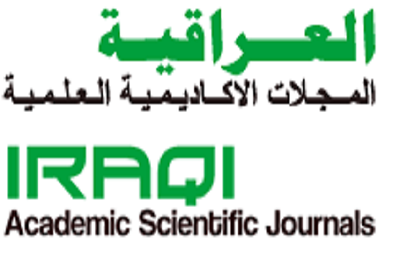 IASJ
IASJ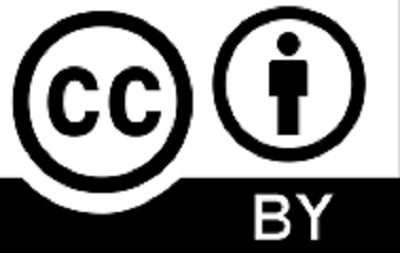 CC-BY-4.0
CC-BY-4.0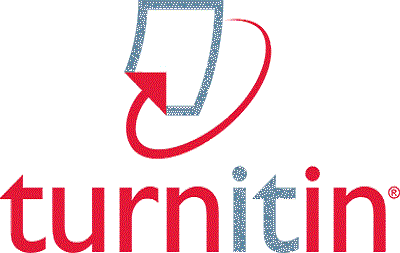 turnitin
turnitin ISSN
ISSN DOAJ
DOAJ Crossref
Crossref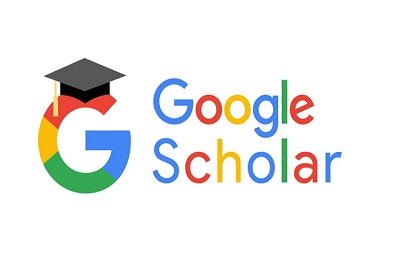 GoogleScholar
GoogleScholar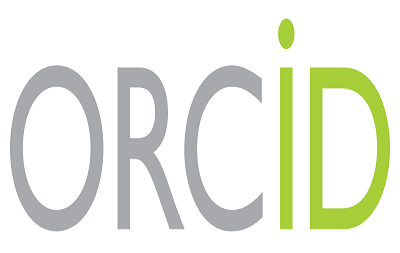 Orcid
Orcid